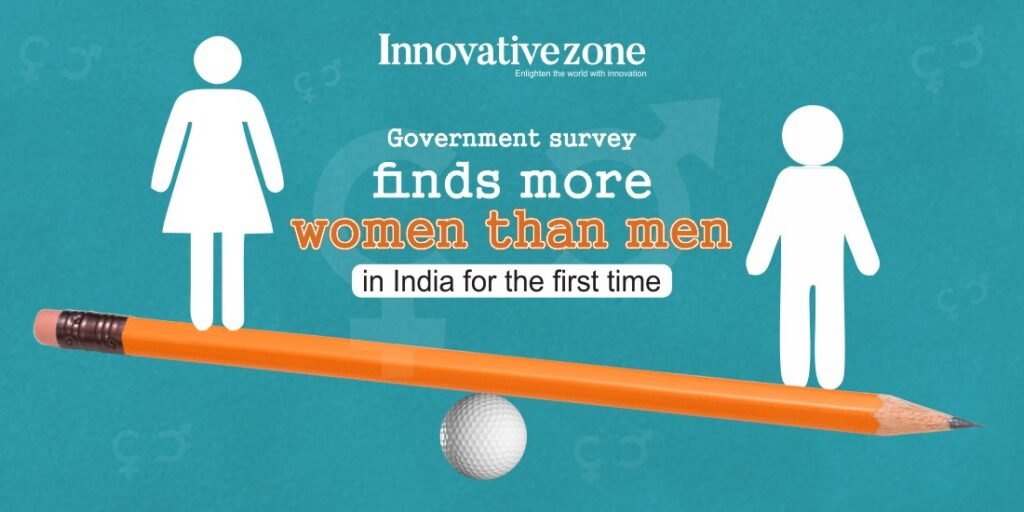Government survey finds more women than men in India for the first time
By Sanjay Maurya
News Highlights
- The country now has more women than males for the first time in the recorded history of India.
- India presently has 1,020 women for every 1,000 males between 2019 and 2021.
- Women with bank accounts have increased from 53% in NFHS-4 to 79% in NFHS-5, which is a significant improvement.
According to a government‘s latest survey, the Country now has more women than males for the first time in the recorded history of India and is no longer facing a population boom, indicating substantial socio-economic upheavals in the country. According to the government’s fifth National Family and Health Survey (NFHS), India presently has 1,020 women for every 1,000 males between 2019 and 2021.
India’s reproductive rate has also decreased to an average of 2, the first time it has been below replacement fertility levels, according to the study of roughly 650,000 homes. It was significantly lower in metropolitan areas, at 1.6. This implies that there aren’t enough children being born to replace the older generation, implying that India’s population of over 1.4 billion is nearing its peak. This is a huge shift for a country where women had an average of six children in the 1950s.
Arunachal Pradesh, Chandigarh, Chhattisgarh, Haryana, Jharkhand, Madhya Pradesh, NCT of Delhi, Odisha, Puducherry, Punjab, Rajasthan, Tamil Nadu, Uttar Pradesh, and Uttarakhand were among the states and union territories surveyed in Phase-II. It’s also worth noting that the NFHS-5 findings for the 22 states and union territories that were part of Phase-I were revealed in December 2020. Preschool education, handicap, access to a toilet facility, death registration, bathing behaviors during menstruation, and techniques and reasons for abortion were all covered in the NFHS-5 survey.
Other Key details revealed in Survey are: –
- The percentage of children aged 12 to 23 months who have had a full vaccination has increased from 62% to 76%.
- In the country, over four-fifths of women (78%) got postnatal care from health staff within two days of birth, up from 62.4 percent in the NFHS-4.
- At the national level, the average number of children per woman has dropped even more, from 2.2 to 2.0.
- The percentage of children aged 12 to 23 months who had a full vaccination has increased from 62% to 76%.
- Exclusive breastfeeding for children under the age of six months has increased from 55 percent in 2015-16 to 64 percent in 2019-21 across India.
- Women with bank accounts have increased from 53% in NFHS-4 to 79% in NFHS-5, which is a significant improvement.
Must Read:-
- Top 10 pharma companies in the world
- Top 10 company of India 2021
- Top 10 logistic Companies in India 2021
- Top 10 automobile companies in India 2021
- Top 10 fastest growing industries in the world 2021
- Top 10 most charitable person in the world 2021
- Top 10 logistic Companies in India – 2021
- Top 10 Company in the Corporate World
- Top 5 Most Fuel Efficient Car In India
- Start Small and go Big: Low-Investment Business Ideas 2021
- Top 10 Electrical Company in India 2021


